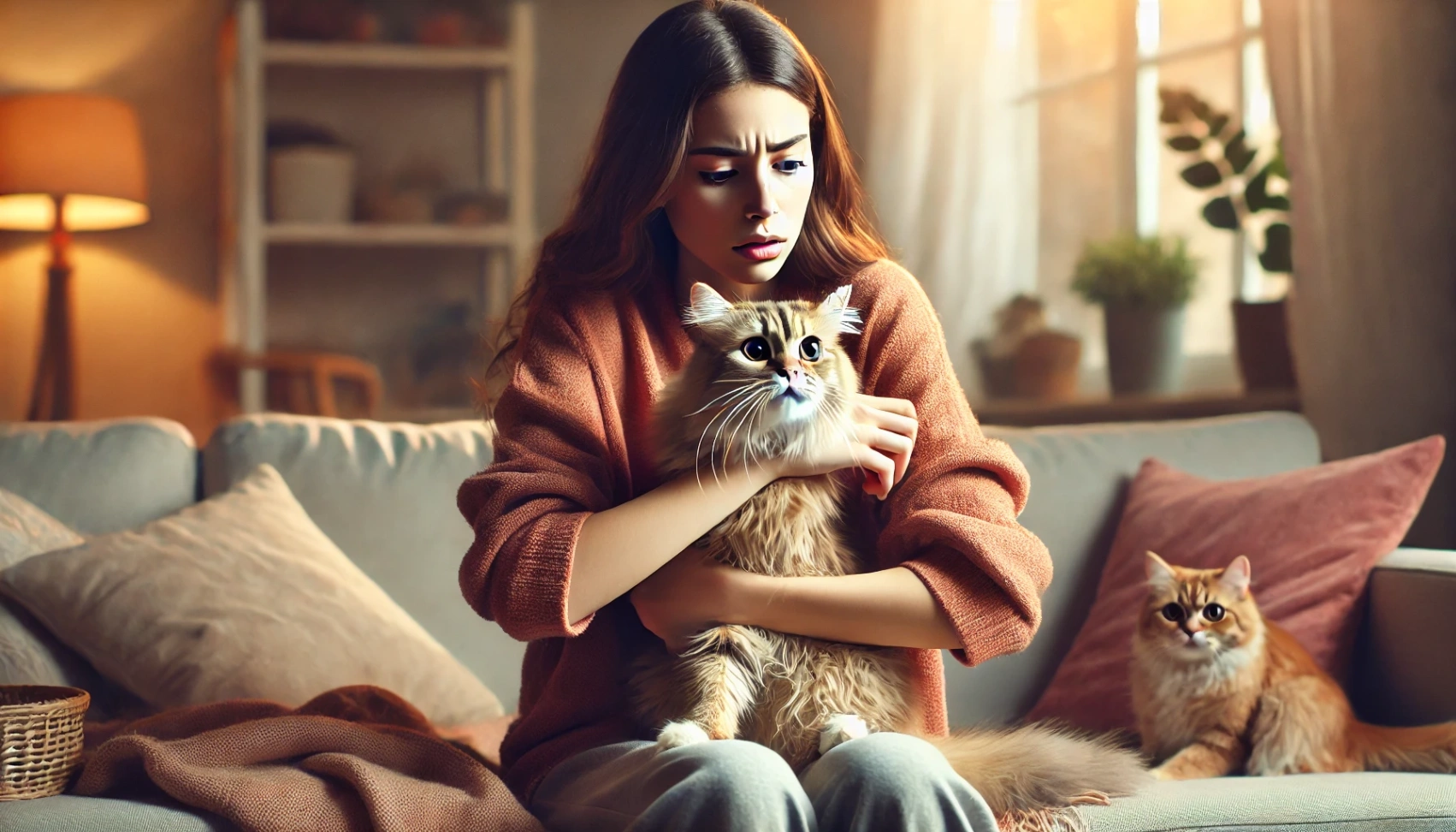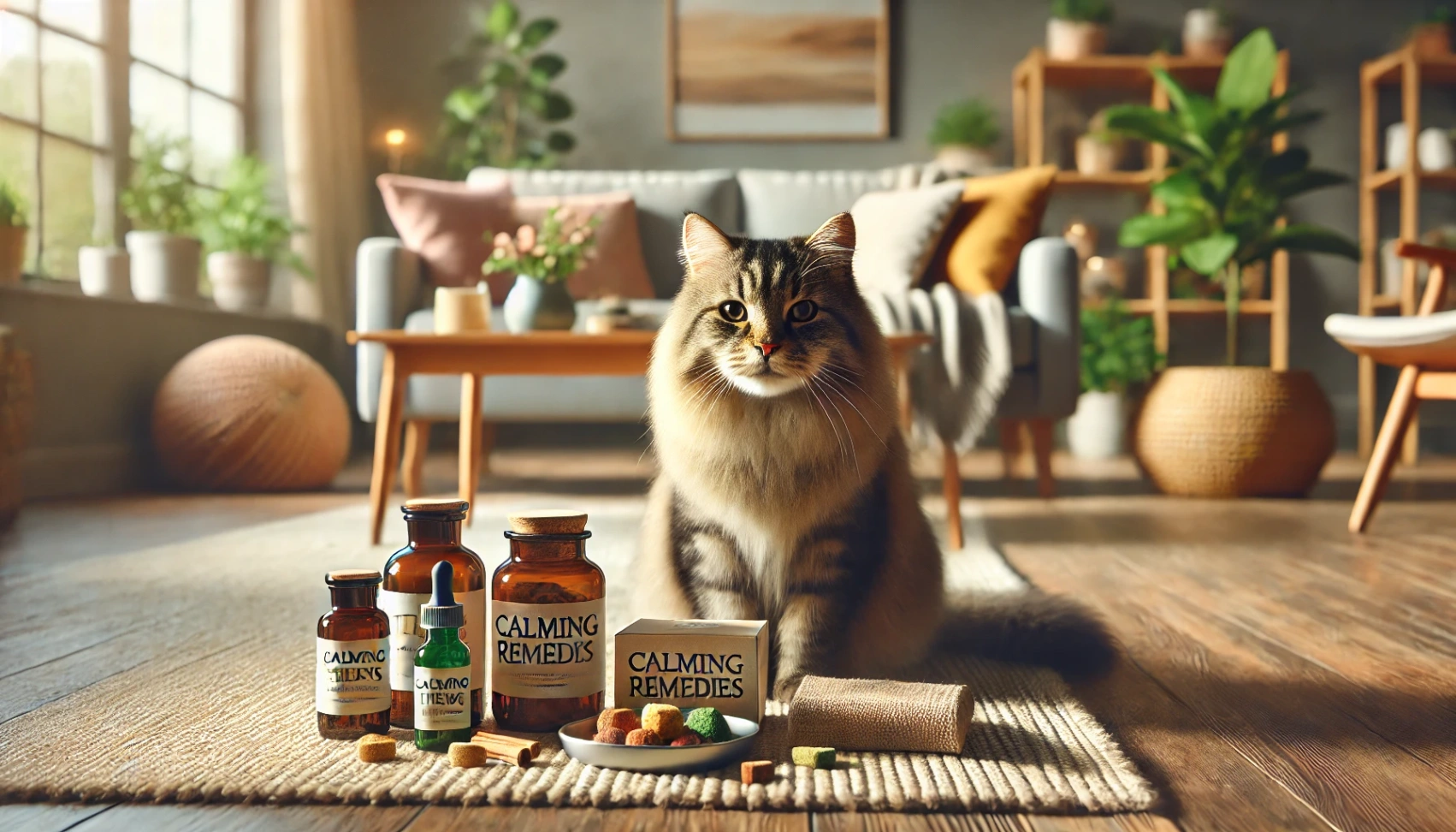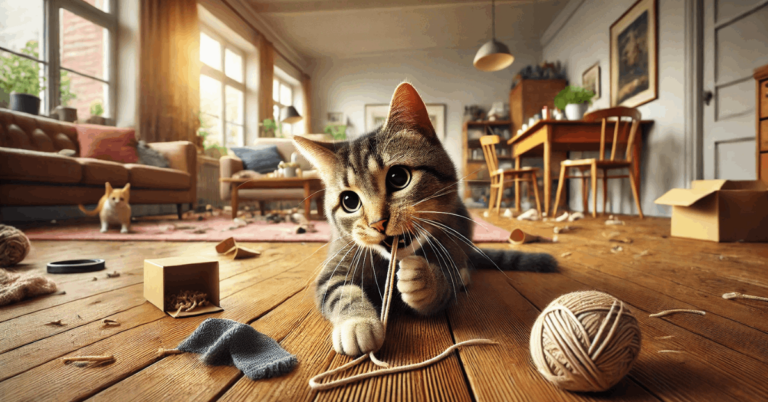Feline anxiety is a condition that affects a cat’s emotional balance and can lead to behavioral issues and stress-related health problems.
Recognizing and addressing anxiety is key to improving a cat’s well-being and happiness.
This guide offers practical tips to help create a calmer, more secure environment for your cat.
Recognizing Signs of Anxiety in Cats
Understanding the signs of feline anxiety is the first step in addressing the issue.
Cats often communicate stress through behavior, habits, and physical health changes.
Look for these common indicators to identify if your cat may be experiencing anxiety:
- Excessive Grooming or Licking: Overgrooming can result in bald spots or irritated skin, signaling stress.
- Hiding or Avoidance: Retreating to hidden areas or avoiding interaction is a typical sign of fear or discomfort.
- Increased Vocalization: Excessive meowing, yowling, or unusual sounds often reflect distress.
- Aggression or Irritability: Sudden aggression toward humans or other pets may stem from anxiety.
- Changes in Appetite: Eating less, overeating, or complete loss of appetite can indicate emotional distress.
- Inappropriate Litter Box Use: Urinating or defecating outside the litter box may be linked to anxiety.
- Restlessness or Pacing: Constant movement or pacing suggests unease or nervousness.

Common Causes of Feline Anxiety
Understanding what triggers anxiety in cats can help prevent and manage stress effectively.
Anxiety often stems from environmental, social, or health-related factors that disrupt a cat’s sense of security.
Here are the most common causes:
- Environmental Changes: Moving to a new home, rearranging furniture, or loud noises like thunderstorms and fireworks.
- New Additions to the Household: Introducing new pets, people, or babies can make cats insecure.
- Separation Anxiety: Prolonged absence of their owner or changes in daily routines.
- Lack of Stimulation: Boredom due to insufficient play, interaction, or exploration opportunities.
- Health Issues or Pain: Undiagnosed illnesses, injuries, or aging-related discomforts.
- Past Trauma: Negative experiences, such as abuse, neglect, or abandonment, can leave lasting effects.
- Overcrowding or Territorial Conflicts: Sharing space with too many pets or territorial disputes with other animals.
Impact of Anxiety on a Cat’s Health
Feline anxiety affects emotional and physical health, leading to behavioral and medical issues. Below is a categorized overview:
Physical Health Impacts
- Stress-Related Illnesses: Can cause urinary and digestive problems.
- Skin Problems: Overgrooming leads to bald spots and infections.
- Weakened Immunity: Makes cats more prone to illnesses.
- Loss of Appetite: Causes weight loss and malnutrition.
Behavioral Health Impacts
- Aggression: Increased irritability toward people or pets.
- Withdrawal: Hiding and avoiding interaction.
- Destructive Behavior: Scratching and knocking over objects.
- Vocalization Changes: Excessive meowing or unusual sounds.
Emotional Well-Being Impacts
- Chronic Anxiety: Prolonged stress may cause depression.
- Bonding Issues: Strains the relationship with the owner.
How to Create a Stress-Free Home
A secure, calm home reduces cat anxiety and helps them feel safe. Here are practical ways to create a stress-free space:
- Provide Safe Spaces: Set up quiet areas with hiding spots like cat caves or boxes.
- Reduce Noise: Minimize loud sounds and sudden disturbances.
- Offer Vertical Spaces: Add shelves or cat trees for climbing and observing.
- Maintain a Routine: Keep feeding, playtime, and grooming schedules consistent.
- Use Calming Tools: Try Feliway diffusers, soothing music, or soft bedding.
- Ensure Enrichment: Provide toys, scratching posts, and interactive activities.
- Limit Overcrowding: Give each pet enough personal space to reduce tension.
- Control Environment Changes: Introduce new pets, furniture, or routines gradually.
Effective Calming Strategies
Calming techniques can significantly reduce your cat’s stress and improve their well-being.
Simple adjustments and activities can help your cat feel more at ease. Here are effective strategies:
- Create a Safe Zone: Set up a quiet area with comfortable bedding and hiding spots.
- Stick to a Routine: Keep feeding, play, and grooming schedules consistent.
- Use Calming Tools: Try Feliway sprays, calming collars, or soothing music.
- Encourage Play: Regular interactive play reduces stress and releases energy.
- Provide Mental Stimulation: Use puzzle feeders, toys, and scratching posts.
- Gentle Interaction: Pet your cat calmly and avoid sudden movements.
- Natural Remedies: Consider vet-approved calming supplements or herbal aids.
- Offer Vertical Spaces: Cat trees and shelves give them a sense of security.

Natural Remedies and Supplements
Natural remedies and supplements can be effective in calming anxious cats.
Always consult a vet before introducing new treatments to ensure they are safe and suitable for your cat. Here are common options:
- Calming Treats: Specially formulated treats containing ingredients like L-theanine or tryptophan.
- Herbal Remedies: Chamomile, valerian root, or catnip can be soothing.
- CBD Oil: May help reduce anxiety when used under veterinary guidance.
- Calming Collars: Infused with pheromones or herbal blends to ease stress.
- Supplements: Products like Zylkene or Rescue Remedy for natural stress relief.
- Essential Oils: Lavender or chamomile oils in diffusers are used sparingly and safely.
- Dietary Adjustments: Foods or supplements designed to promote calm behavior.
Socializing and Behavioral Training
Proper socialization and training help reduce anxiety and build trust in cats. Here are seven effective methods:
- Gradual Exposure: Slowly introduce new people, pets, or environmental changes.
- Positive Reinforcement: Reward calm behavior using treats, toys, or gentle petting.
- Desensitization: Gradually expose your cat to triggers in a controlled way to reduce fear.
- Interactive Play: Use toys to build confidence and create positive interactions.
- Safe Zones: Ensure your cat has a quiet retreat during stressful situations.
- Consistent Routine: Maintain regular interaction to build familiarity and trust.
- Avoid Punishment: Focus on rewards and redirection instead of scolding.
When to Consult a Veterinarian or Behaviorist
If your cat’s anxiety persists or worsens despite home interventions, seeking professional help is essential.
Veterinarians and behaviorists can identify causes and provide solutions. Look for these signs to seek help:
- Chronic or Worsening Symptoms: Anxiety that does not improve over time or becomes more severe.
- Health Issues: Signs like vomiting, lethargy, or sudden weight loss alongside anxiety.
- Persistent Aggression: Ongoing hostility toward people or other animals.
- Extreme Fear or Withdrawal: Hiding for long periods or avoiding all interaction.
- Litter Box Problems: Consistent accidents outside the litter box without improvement.
- Unresponsive to Calming Strategies: Anxiety that persists despite using tools or remedies.
- Need for Medication: A vet may recommend medication if natural remedies and training fail.
Myths About Feline Anxiety
Misconceptions about feline anxiety can lead to overlooking or misunderstanding a cat’s needs.
Clearing up these myths helps in providing better care and support. Here are five common myths:
- “Cats Don’t Get Anxious”: Cats experience stress like humans and show it in various ways.
- “Anxious Behavior Is Just Personality”: Anxiety is not a personality trait but a response to stressors.
- “Cats Will Adapt on Their Own”: Anxiety can worsen and affect their health without intervention.
- “Medication Is Always the Answer”: Medication is not always necessary and should only be used under a vet’s guidance.
- “Only Trauma Causes Anxiety”: Anxiety can result from changes in routine, environment, or health issues, not just past trauma.
To Wrap Up
Feline anxiety is manageable with the right understanding and care, ensuring your cat’s happier and healthier life.
You can create a more secure environment by recognizing signs, addressing causes, and using calming strategies.
If anxiety persists, consult a veterinarian or behaviorist for expert guidance tailored to your cat’s needs.


